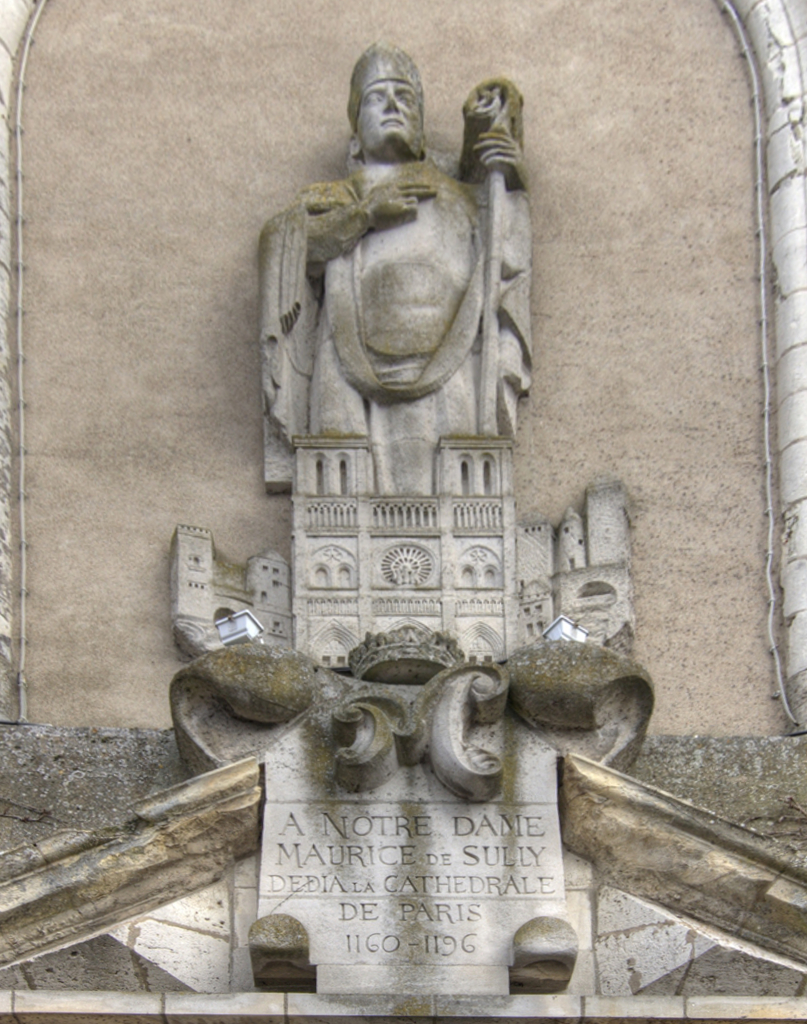Majesty in the Mundane: Bishop Maurice De Sully
By Marisa DeMaria
The cathedral of Notre-Dame in Paris means different things to different people, depending on what they bring to it. For some, it is a sacred place of worship, worthy of honor and glory. For locals it may be a place of mediation and solace or a proud symbol of their city. The cathedral may be something heard in passing, a pop culture reference, or something that someone intentionally studies and dedicates time to. For many modern-day visitors and wanderers, it may remind them of the fire that broke in spring of 2019 and the headlines made first by the fire and then by the controversies that followed it. Since her conception around year 1160, Notre-Dame has been just that -- a whirlwind of various ideas and fantasies coming to fruition over time.
Who do you picture as the Bishop behind such a glorious and notable piece of history? He was not a man of great royalty, draped in gold, and boastful of his successes. He was not someone who ruled because of his wealth and collected his dues. (He wasn't Phillip, the brother of the king). Instead, Maurice de Sully was born of peasants and known for his humility. At first thought, this may sound like someone with a much less interesting biography and legacy than the first man described. However, the true fantastic narrative is that of a rather normal life like this one.
 |
| Memorial to Maurice de Sully at the church in Sully-sur-Loire. Notre-Dame, Paris, is shown at his feet. Oric1, Public domain, via Wikimedia Commons |
To combat the obvious, let’s start with the fact that there simply isn’t much information about this man available. We know the dots: his upbringing, his election, and his influence, but we don’t know how to connect them. Maurice De Sully was born to peasant parents in 1120. He grew up in the lower class that made up about 80-90% of France at the time. Perhaps he was surrounded by manual labor and long days in the French countryside, knowing only his family and fellow laborers. This means he was taught to labor for the resources he needed and dedicate his time to partake in providing for his family. We know little about his early upbringing, other than the fact that he was, well, normal for the time. The vast majority of France at this time were peasants. His life began to change when he came to Paris to study and in this way entered the world of the cathedral, becoming a canon and subdeacon of the church. From there, we know that he came to be admired by the church and the king as Louis VII favored his election as bishop in 1159.
| Page from a copy of Maurice de Sully's Sermons, Bern, Burgerbibliothek, Cod. A95.4, fol. 7v. Maurice de Sully, Public domain, via Wikimedia Commons |
As Bishop, he also made the decision to build a new cathedral church and so started construction on the building we know today. This new building replaced the decrepit cathedral of Saint-Etienne and the 6th-century Notre-Dame with a church in the new Gothic style. This was a building that represented the day’s modern thought and forward thinking. It was meant to be an innovative place for worship and royalty, a new monument to match France's newfound status, and one that would inspire the surrounding world. He had the support of the king in building the church and he donated his own funds, although he is not remembered as a man of great wealth. This set a standard for his diocese and those faithful to the church to also contribute to the construction. As bishop he was also an enthusiastic preacher and wrote Sermons on the Gospels, which became a model for other priests and preachers. These sermons brought religious stories and ideas to the ordinary people. Likewise, a more modern term for sculptures and stained glass in the cathedral is a "poor man's bible." This derives from the use of visual language to convey Biblical stories to a largely illiterate population of the time. Although de Sully was clearly literate himself, he would have been familiar with this larger population from his childhood.
 |
| Plaque in memory of Maurice de Sully inside of Notre-Dame, Paris. Jim G from Silicon Valley, CA, USA, CC BY 2.0 <https://creativecommons.org/licenses/by/2.0>, via Wikimedia Commons |
Sully later retired and died in 1196, and Notre-Dame went on to live a full life beyond Sully’s initial humble, yet monumental ideas. We should not need convincing that Sully’s life is worth learning about along with the legacy of Notre-Dame. When we can become satisfied with the simple, and learn to treasure it, we can truly slow down and see the beauty in what we consider small. Taking the time to observe the life of Sully, despite how plain it seems compared to the plot twists and turns of modern entertainment, we can see Notre-Dame in a new way and accompany her with a new mental image -- one of a peasant turned prosperous leader. By appreciating what is humble and simple to us, we are not only appreciating an historical figure like Sully, but truly seeing one of the many ways the Notre-Dame, through history, has constantly outstretched her hand and held meaning for all who consider her.
Comments
Post a Comment